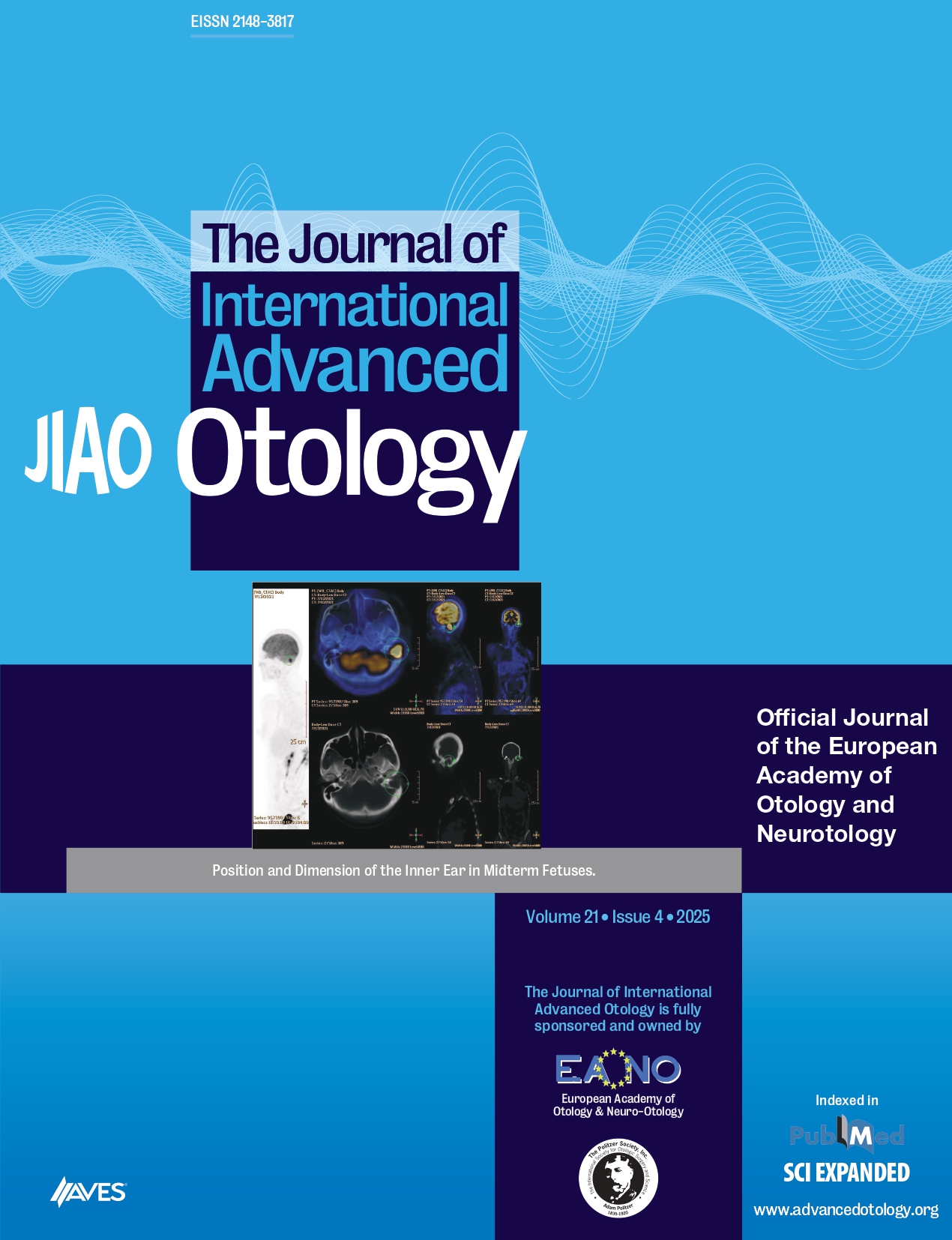Abstract
OBJECTIVE: This study aimed to measure the radiological dimensions of the cochlear aqueduct in Meniere’s disease and in low-frequency hearing loss (LFHL) patients and control patients.
MATERIALS and METHODS: Groups of 26 patients (32 ears, including 6 with bilateral involvement) with Meniere’s disease, 14 patients (18 ears) with LFHL, and 23 patients with unilateral chronic otitis media, as controls, were enrolled. For the measurements, high-resolution computed tomography (HRCT) of the temporal bone was performed. The cochlear aqueduct was evaluated for the following six parameters: medial opening (MO), petrous apex (PA), otic capsule (OC), lateral opening (LO), distance of the cochlear aqueduct (DC), and length of the cochlear aqueduct (LC).
RESULTS: The PA, OC, DC, and LC were not significantly different between the groups. LO could not be measured because the LO was not visible in all cases. The MO diameter was narrower in the Meniere’s disease group than in the LFHL group (p=0.001) and in the controls (p=0.035). When the dimensions of both ears were measured in patients with unilateral Meniere’s disease, no statistically significant difference was found.
CONCLUSION: Compared to LFHL and controls, the MO of the cochlear aqueduct was significantly smaller in the Meniere’s disease group.



.png)
.png)